Are you a wine enthusiast or a social drinker? A newbie who is just getting started in the world of wine? Or are you an inquisitive soul who happened to come here to get answers and know your wine?
Well, this article will provide you with precisely the type of information that will make the world of the wine less daunting. Even if that isn’t the goal, it will undoubtedly make your future wine experiences more fascinating and enlightening. It’s an easy guide to assist you in your journey to become an oenophile.
So sip back and read on! Pun intended.
Origin of wine
It may surprise you to learn that no one knows who invented wine. Wine’s beginnings predate written history, and we are still unsure about the initial wild grapevine cultivation specifics.
However, what is known is that wine has been made for thousands of years, with evidence of ancient wine production dating back to 7000 BC.
"Wine is older than history. Humans didn't invent wine. We discovered it." - Philip Seldon
The fundamentals of wine
Hundreds of different cultures and nations produce wine, each making its unique style and flavour. Wine education spans various topics, from grape varieties to geographical locations to flavour qualities. So there is no limit to how much knowledge you may acquire. However, following a few simple rules can help you tailor your experience to your interests and tastes.
Wine is usually prepared from fermented grapes (a process called vinification), although not the kind you’d get in the supermarket. Wine grapes are tiny, delicious, and have thick skins. They also have seeds. Production of all wine grapes uses one or more varieties of the European species Vitis vinifera. We’ll learn more about grapes in a short while. Let’s talk a bit more about fermentation first.
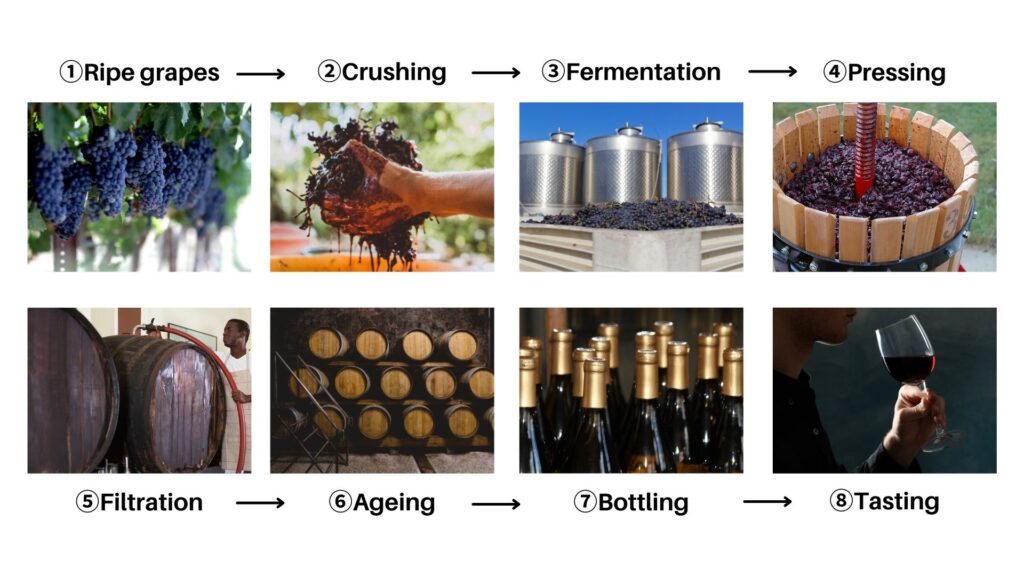
Fermentation is how grape “must” (unfermented grapes or juice) is transformed into wine. Yeast is added during fermentation to utilize the sugar in the grapes and convert it to alcohol and carbon dioxide. The higher the initial sugar content of the must, the more alcohol will be present in the finished wine – if it is allowed to ferment to dryness. A dry wine has no residual sugar left after fermentation stops, which means it is not sweet.
Different grape varieties and yeast strains are essential factors in producing various types of wine. Further differences result from complex interactions influenced by the grape growth environment, fermentation reactions, temperature and the wine production process. The ability to affect the wine-making process in so many ways makes it interesting and almost like an art form.
Five categories of wine
Wine is classified into five categories.
- Red wine
- White wine
- Rosé wine
- Sparkling wine
- Dessert wine
At this point, I’d like to explain a bit more about grape anatomy and how employing its various parts results in the development of distinct wines.
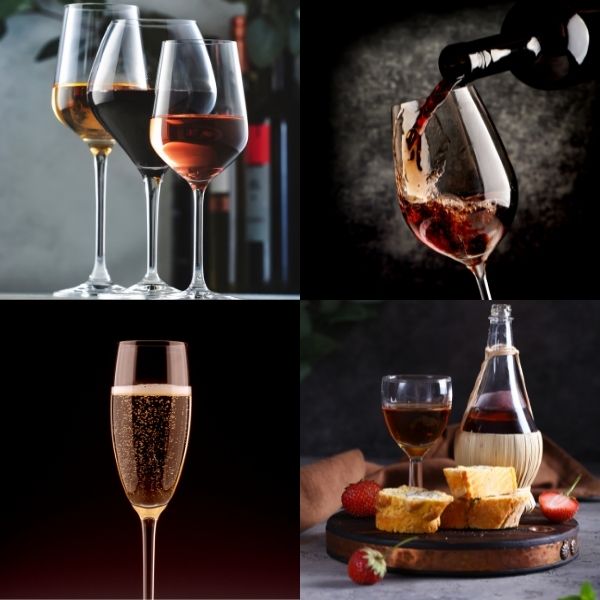
The skin, pulp, stems, and seeds make up the grape berry.
Stems – The presence of stems during fermentation can provide a bitter flavour to the wine. Hence grapes are destemmed before being made into wine.
Pulp– Pulp constitutes water, sugar, and acid. Sugars are at the heart of the wine-making process. The pulp is pressed to extract the grape juice.
Skins – Grape skin is high in tannins (explained later), colour, and flavour, and it also provides natural yeast to the wine. It is essential in producing red wines to impart colour, but less so in rosé and white wines.
Seeds – Seeds, like stems, are often discarded. However, leaving the seeds in contact with the juice can extract tannins for the red wine-making process. The majority of white wine, on the other hand, is prepared without the presence of skins or seeds by pressing the juice out rapidly before fermentation.
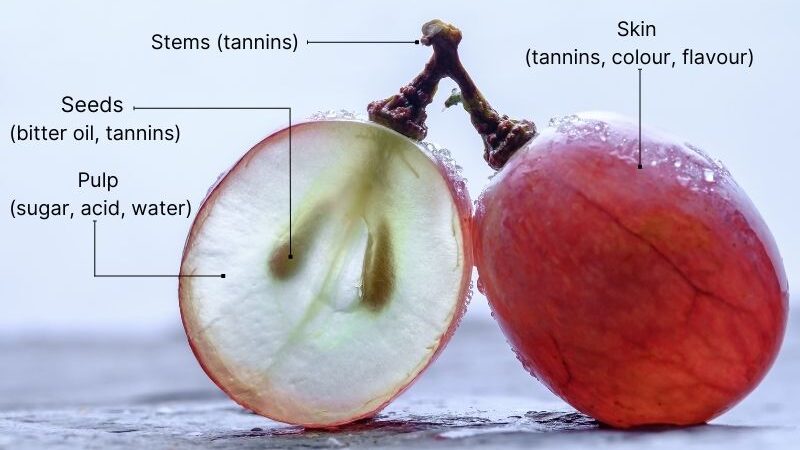
How do wines get the flavour and colour?
The wine’s colour and overall character are determined by the type of grape used and the quantity of skin contact when the juice is collected.
Red wine: Red wine uses red grapes. Allowing the grape skins to soak in the extracted juice gives red wine colour and flavour (particularly tannins).
White wine: The grapes used are typically white and sometimes red. It is prepared by pressing grapes quickly and letting the juice drain away from the grape skins.
Rosé wine: Short contact with the red grape skins gives rosé wine its colour. It may be the earliest known form of wine since it is the simplest to create using the skin contact method.
Sparkling wines: Sparkling wines are effervescent and can be prepared in any of the following types (red, rosé, or white). They must go through secondary fermentation to produce carbon dioxide or be injected with carbon dioxide after fermentation to create bubbles.
Dessert wines: They are sweet wines with high residual sugar after fermentation. There are several methods for raising the quantity of sugar in a wine, resulting in products with varying intensities and names.
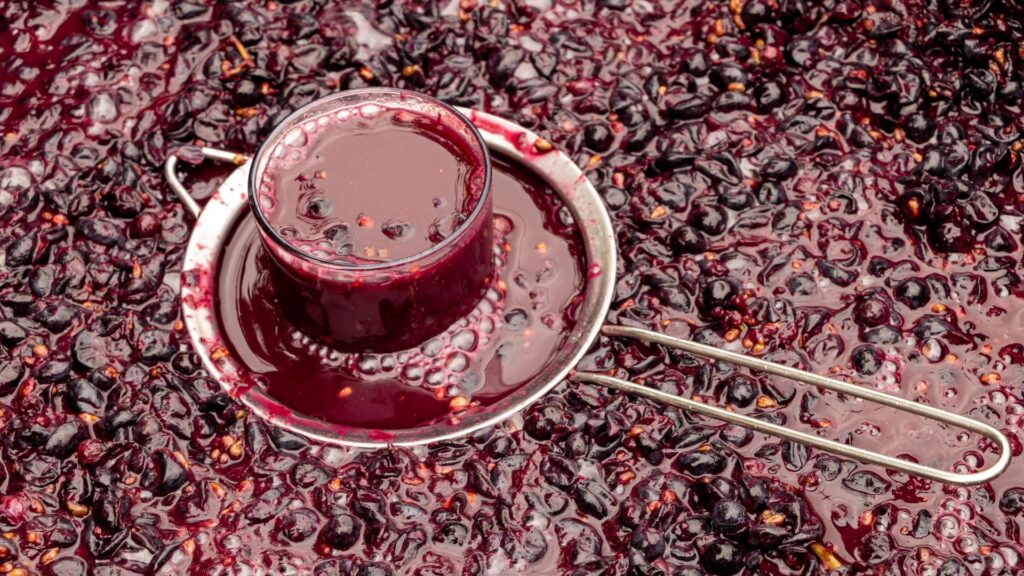
Five fundamental wine characteristics
Wine has its own language. To construct words and meaningful phrases, much like learning a language, one must know the alphabet. To grasp the flavours of wine and how they combine to form the structure of the wine, you must first master five basic characteristics.
1) Body
Body is probably the best place to start, and it is also one of the easiest to define. Body provides a glimpse of a wine’s overall impression.
On the most basic level, body refers to how a wine feels in our mouths and how it rests on our tongues. Light body, medium body, and full body are the three types of wine body. A simple way to understand the differences is to imagine how skim milk, whole milk, and cream feel in your mouth.
While grape variety, alcohol, and sweetness all contribute to the body of a wine, alcohol is the most crucial contributor. Alcohol provides a wine with viscosity, making a high-alcohol content wine feel heavier. Hence, full-bodied wine has a high viscosity, and light-bodied wine has a low viscosity. Knowing the effect alcohol has on the body of a wine is a practical strategy to determine the body classification of the wine.
Wines with less than 12.5 percent alcohol content are considered light-bodied. Wines ranging from 12.5 to 13.5 percent alcohol content are called medium-bodied. Finally, any wine with more than 13.5 percent alcohol is termed full-bodied.
This categorization is important in food pairing: light-bodied wines go well with lighter foods, but full-bodied wine goes well with rich dishes like steak.
2) ALCOHOL
Naturally, alcohol content has the most significant influence on a wine’s flavour, body, and classification. While the average alcohol concentration of wine is roughly 12% ABV (Alcohol By Volume), it can range from 5.5 to 23 percent ABV. The greater the alcohol content, the stronger and richer the wine will taste. In contrast, lower alcohol content wines will seem lighter. Nonetheless, alcohol, in general, provides a warming feeling in the back of the tongue and throat.
3) sweetness
The remaining sweetness in the wine after fermentation is residual sugar. A sweet wine will have more residual sugar. In contrast, a dry wine will have converted all the sugar available to alcohol. Sweet wine has a higher viscosity and will progressively produce wine tears on the edge of a glass.
One can perceive the wine’s sweetness on the tip of the tongue. Another indication is the sticky and sweet flavour you get when you lick your lips after tasting.
Sweet wines go nicely with savoury foods in general. Sweetness also helps balance the acidity in wine – think of its role in Champagne and other Sparkling wines with high acidity levels.

4) acidity
Whether red or white, all wines fall on the acidic end of the pH range. The acidity of wine gives it its sharpness and keeps it taste fresh and bright. Wines with high acidity are typically crisp, sour, and tangy and have a lighter body. Acidity contributes to a wine’s overall balance.
How can you tell whether something is acidic? If you rub your tongue along the roof of your mouth, you’ll experience a tingling feeling on the sides of your tongue, which may feel harsh. Another excellent approach to determine a wine’s acidity is to analyze how much it makes your mouth water.
Wine’s acidity complements both fatty and sweet dishes.
5) tannins
Tannins are polyphenols that give bitter and astringent flavours to foods. Tannin is also responsible for the colour and complexity of the wine. It adds balance and structure and prolongs the life of wines. Because tannin has a drying effect on the palate, a high tannin content is sometimes mistaken for a dry wine.
Tannins can be found in wine grape skins and seeds. Red wines are soaked with grape skins, as a result, have high levels of tannin. However, tannins are also present in certain white wines, particularly those that have spent time in oak during the ageing process. The tannins in oak wood add to the wines’ rich and nuanced flavour.
Tannins also contain antioxidant properties, which is why many studies show that red wine is good for your health. However, if you want wines that appear sweeter or fruitier, look for wines with fewer tannins.

Tannin molecules bind to proteins, which is why meals with higher levels of these proteins, such as steak and lamb, combine so well with high-tannin wines. The astringency of the wine also counteracts the fattiness, resulting in a well-balanced match.
If I were to sum it up, sugars and alcohol increase the sweetness of a wine. At the same time, acids (sourness) and bitter tannins counterbalance it. Alcohol, acidity, sweetness, and tannin are all in perfect proportion in a ‘well-balanced’ wine.
"The best way to learn about wine is to uncork a few bottles and start sampling." - Harvey Steinman
Wine grapes – Know your wine
Although there are thousands of different types of wine grapes, only a few dozen have gained widespread recognition and acclaim. Familiarizing yourself with a few will offer you a tremendous advantage while browsing a wine list or a wine store.
Popular Red Wine Grapes
- Cabernet sauvignon (Kab-er-nay Saw-vin-yawn)
- Syrah (Sear-ah) aka Shiraz (Shi-raaz)
- Zinfandel (Zin-fan-dell)
- Merlot (Mer-loh)
- Pinot noir (Pee-no Nwar)
Popular White Wine Grapes
- Chardonnay (Shar-dun-nay)
- Sauvignon blanc (Saw-vin-yawn Blonk)
- Pinot Gris (Pee-no Gree)
- Riesling (Reese-ling)
- Moscato (Mohs-Kaa-toh)
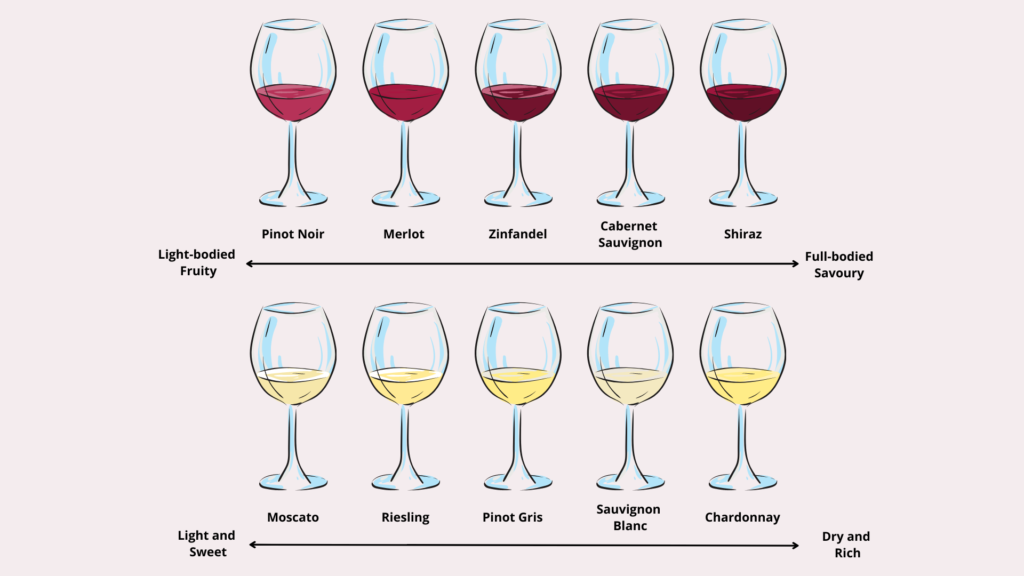
The best way to learn about wines is to try a lot and try them everywhere. The more you taste, the more you know to differentiate between most wines. And as they say, it’s wine o’clock somewhere. So go ahead and pop that cork!
The Ultimate Guide to Japanese Food
